Zhenguo Li
PILC: Practical Image Lossless Compression with an End-to-end GPU Oriented Neural Framework
Jun 10, 2022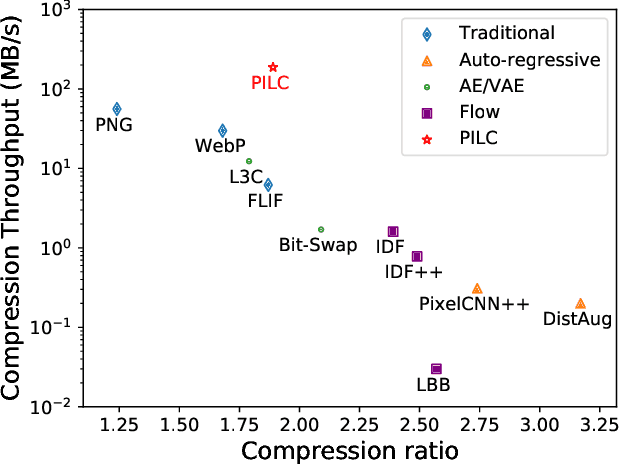
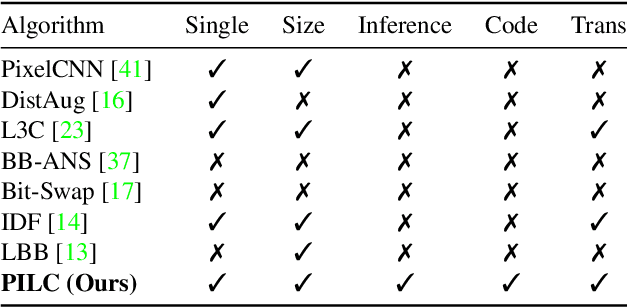
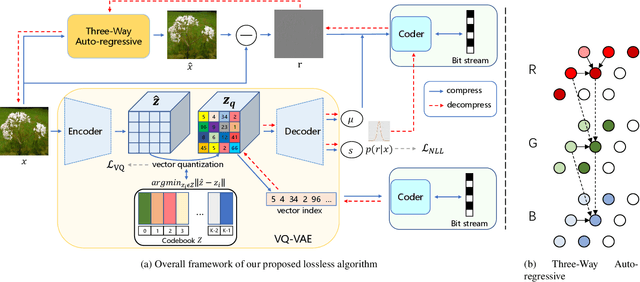
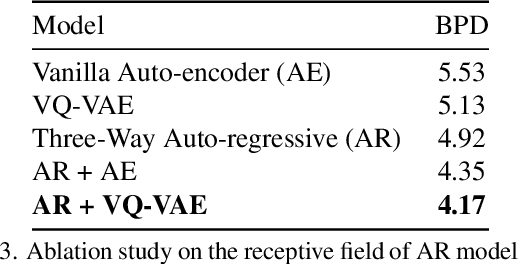
Abstract:Generative model based image lossless compression algorithms have seen a great success in improving compression ratio. However, the throughput for most of them is less than 1 MB/s even with the most advanced AI accelerated chips, preventing them from most real-world applications, which often require 100 MB/s. In this paper, we propose PILC, an end-to-end image lossless compression framework that achieves 200 MB/s for both compression and decompression with a single NVIDIA Tesla V100 GPU, 10 times faster than the most efficient one before. To obtain this result, we first develop an AI codec that combines auto-regressive model and VQ-VAE which performs well in lightweight setting, then we design a low complexity entropy coder that works well with our codec. Experiments show that our framework compresses better than PNG by a margin of 30% in multiple datasets. We believe this is an important step to bring AI compression forward to commercial use.
CO^3: Cooperative Unsupervised 3D Representation Learning for Autonomous Driving
Jun 08, 2022
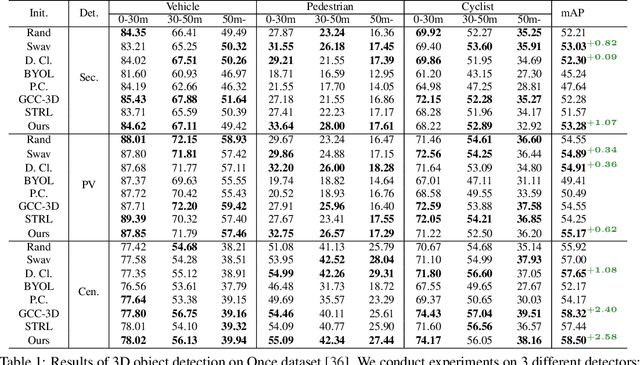
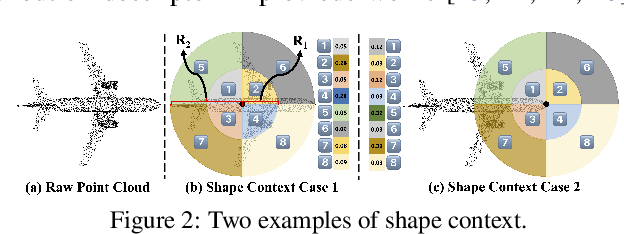
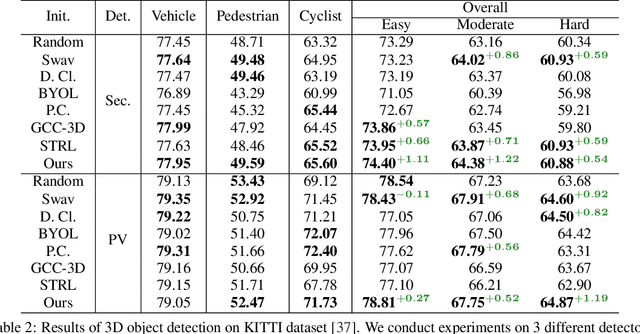
Abstract:Unsupervised contrastive learning for indoor-scene point clouds has achieved great successes. However, unsupervised learning point clouds in outdoor scenes remains challenging because previous methods need to reconstruct the whole scene and capture partial views for the contrastive objective. This is infeasible in outdoor scenes with moving objects, obstacles, and sensors. In this paper, we propose CO^3, namely Cooperative Contrastive Learning and Contextual Shape Prediction, to learn 3D representation for outdoor-scene point clouds in an unsupervised manner. CO^3 has several merits compared to existing methods. (1) It utilizes LiDAR point clouds from vehicle-side and infrastructure-side to build views that differ enough but meanwhile maintain common semantic information for contrastive learning, which are more appropriate than views built by previous methods. (2) Alongside the contrastive objective, shape context prediction is proposed as pre-training goal and brings more task-relevant information for unsupervised 3D point cloud representation learning, which are beneficial when transferring the learned representation to downstream detection tasks. (3) As compared to previous methods, representation learned by CO^3 is able to be transferred to different outdoor scene dataset collected by different type of LiDAR sensors. (4) CO^3 improves current state-of-the-art methods on both Once and KITTI datasets by up to 2.58 mAP. Codes and models will be released. We believe CO^3 will facilitate understanding LiDAR point clouds in outdoor scene.
Task-Customized Self-Supervised Pre-training with Scalable Dynamic Routing
May 26, 2022
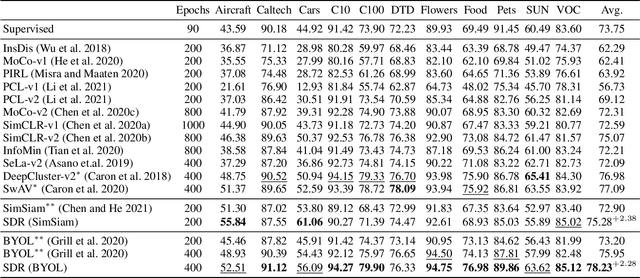

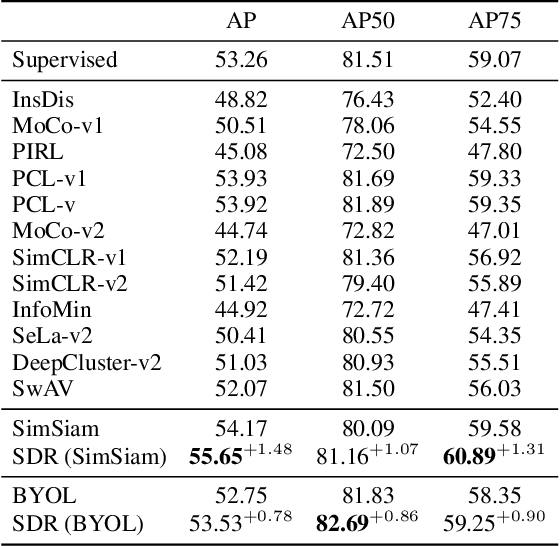
Abstract:Self-supervised learning (SSL), especially contrastive methods, has raised attraction recently as it learns effective transferable representations without semantic annotations. A common practice for self-supervised pre-training is to use as much data as possible. For a specific downstream task, however, involving irrelevant data in pre-training may degenerate the downstream performance, observed from our extensive experiments. On the other hand, for existing SSL methods, it is burdensome and infeasible to use different downstream-task-customized datasets in pre-training for different tasks. To address this issue, we propose a novel SSL paradigm called Scalable Dynamic Routing (SDR), which can be trained once and deployed efficiently to different downstream tasks with task-customized pre-trained models. Specifically, we construct the SDRnet with various sub-nets and train each sub-net with only one subset of the data by data-aware progressive training. When a downstream task arrives, we route among all the pre-trained sub-nets to get the best along with its corresponding weights. Experiment results show that our SDR can train 256 sub-nets on ImageNet simultaneously, which provides better transfer performance than a unified model trained on the full ImageNet, achieving state-of-the-art (SOTA) averaged accuracy over 11 downstream classification tasks and AP on PASCAL VOC detection task.
ZeroGen$^+$: Self-Guided High-Quality Data Generation in Efficient Zero-Shot Learning
May 25, 2022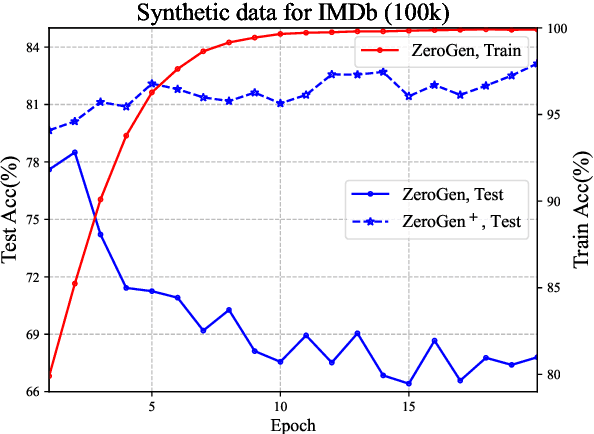

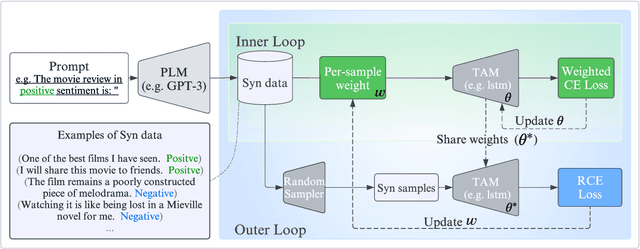

Abstract:Nowadays, owing to the superior capacity of the large pre-trained language models (PLM), the PLM-based zero-shot learning has shown promising performances on various natural language processing tasks. There are emerging interests in further exploring the zero-shot learning potential of PLMs. Among them, ZeroGen attempts to purely use PLM to generate data and train a tiny model without relying on any task-specific annotation. Despite its remarkable results, we observe that the synthesized data from PLM contains a significant portion of samples with low quality, overfitting on such data greatly hampers the performance of the trained model and makes it unreliable for deployment.Since no gold data is accessible in zero-shot scenario, it is hard to perform model/data selection to prevent overfitting to the low-quality data. To address this problem, we propose a noise-robust bi-level re-weighting framework which is able to learn the per-sample weights measuring the data quality without requiring any gold data. With the learnt weights, clean subsets of different sizes can then be sampled to train the task model. We theoretically and empirically verify our method is able to construct synthetic dataset with good quality. Our method yeilds a 7.1% relative improvement than ZeroGen on average accuracy across five different established text classification tasks.
Arch-Graph: Acyclic Architecture Relation Predictor for Task-Transferable Neural Architecture Search
Apr 12, 2022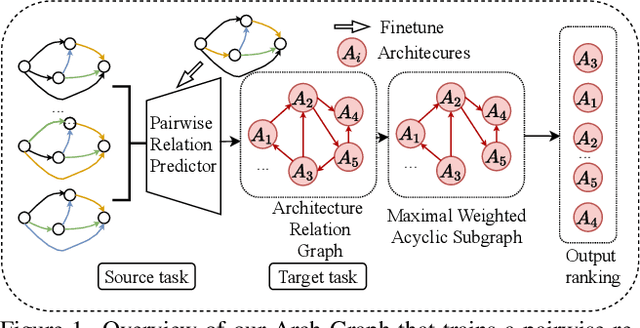
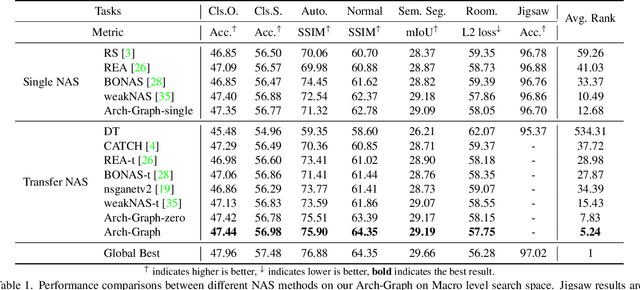

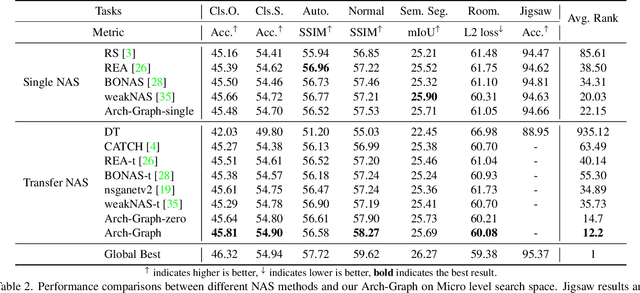
Abstract:Neural Architecture Search (NAS) aims to find efficient models for multiple tasks. Beyond seeking solutions for a single task, there are surging interests in transferring network design knowledge across multiple tasks. In this line of research, effectively modeling task correlations is vital yet highly neglected. Therefore, we propose \textbf{Arch-Graph}, a transferable NAS method that predicts task-specific optimal architectures with respect to given task embeddings. It leverages correlations across multiple tasks by using their embeddings as a part of the predictor's input for fast adaptation. We also formulate NAS as an architecture relation graph prediction problem, with the relational graph constructed by treating candidate architectures as nodes and their pairwise relations as edges. To enforce some basic properties such as acyclicity in the relational graph, we add additional constraints to the optimization process, converting NAS into the problem of finding a Maximal Weighted Acyclic Subgraph (MWAS). Our algorithm then strives to eliminate cycles and only establish edges in the graph if the rank results can be trusted. Through MWAS, Arch-Graph can effectively rank candidate models for each task with only a small budget to finetune the predictor. With extensive experiments on TransNAS-Bench-101, we show Arch-Graph's transferability and high sample efficiency across numerous tasks, beating many NAS methods designed for both single-task and multi-task search. It is able to find top 0.16\% and 0.29\% architectures on average on two search spaces under the budget of only 50 models.
ManiTrans: Entity-Level Text-Guided Image Manipulation via Token-wise Semantic Alignment and Generation
Apr 09, 2022
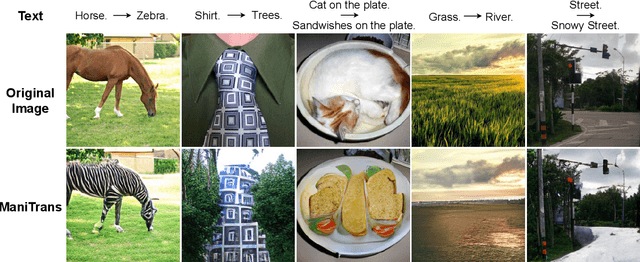
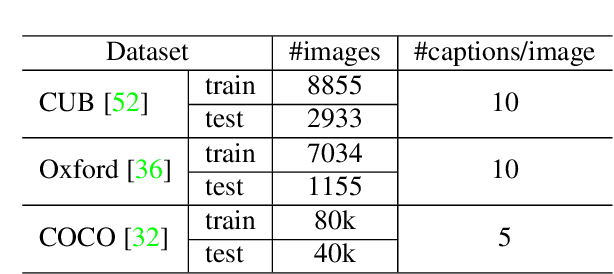
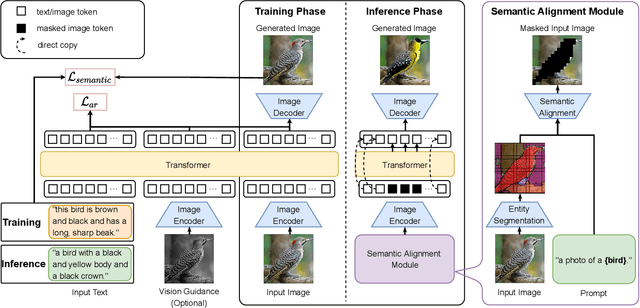
Abstract:Existing text-guided image manipulation methods aim to modify the appearance of the image or to edit a few objects in a virtual or simple scenario, which is far from practical application. In this work, we study a novel task on text-guided image manipulation on the entity level in the real world. The task imposes three basic requirements, (1) to edit the entity consistent with the text descriptions, (2) to preserve the text-irrelevant regions, and (3) to merge the manipulated entity into the image naturally. To this end, we propose a new transformer-based framework based on the two-stage image synthesis method, namely \textbf{ManiTrans}, which can not only edit the appearance of entities but also generate new entities corresponding to the text guidance. Our framework incorporates a semantic alignment module to locate the image regions to be manipulated, and a semantic loss to help align the relationship between the vision and language. We conduct extensive experiments on the real datasets, CUB, Oxford, and COCO datasets to verify that our method can distinguish the relevant and irrelevant regions and achieve more precise and flexible manipulation compared with baseline methods. The project homepage is \url{https://jawang19.github.io/manitrans}.
Generalizing Few-Shot NAS with Gradient Matching
Apr 05, 2022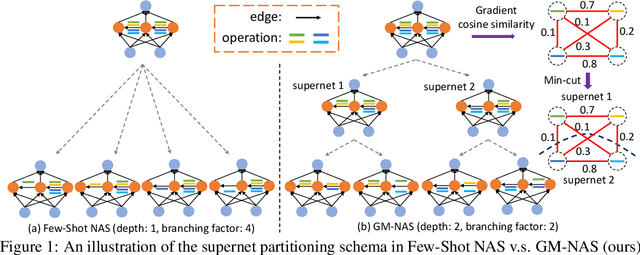
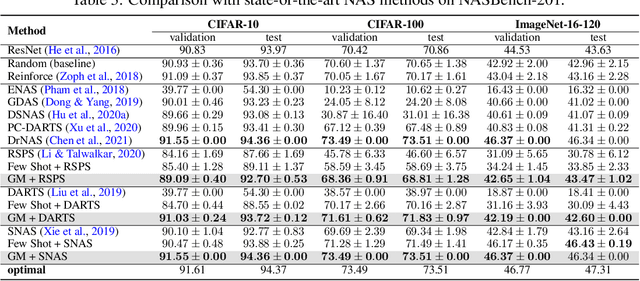

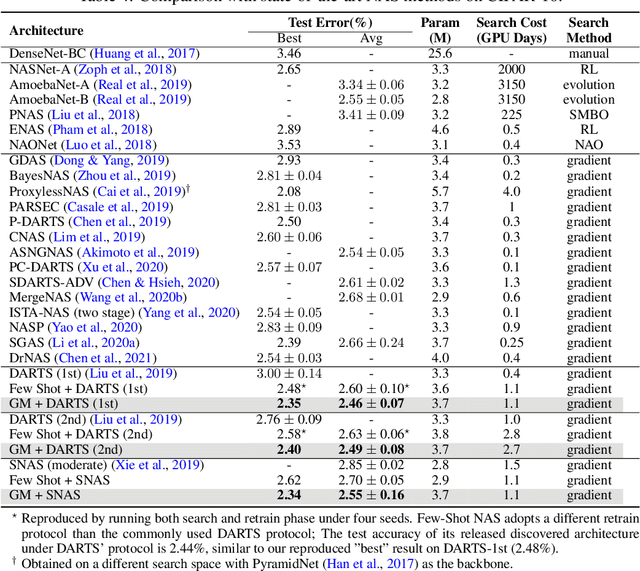
Abstract:Efficient performance estimation of architectures drawn from large search spaces is essential to Neural Architecture Search. One-Shot methods tackle this challenge by training one supernet to approximate the performance of every architecture in the search space via weight-sharing, thereby drastically reducing the search cost. However, due to coupled optimization between child architectures caused by weight-sharing, One-Shot supernet's performance estimation could be inaccurate, leading to degraded search outcomes. To address this issue, Few-Shot NAS reduces the level of weight-sharing by splitting the One-Shot supernet into multiple separated sub-supernets via edge-wise (layer-wise) exhaustive partitioning. Since each partition of the supernet is not equally important, it necessitates the design of a more effective splitting criterion. In this work, we propose a gradient matching score (GM) that leverages gradient information at the shared weight for making informed splitting decisions. Intuitively, gradients from different child models can be used to identify whether they agree on how to update the shared modules, and subsequently to decide if they should share the same weight. Compared with exhaustive partitioning, the proposed criterion significantly reduces the branching factor per edge. This allows us to split more edges (layers) for a given budget, resulting in substantially improved performance as NAS search spaces usually include dozens of edges (layers). Extensive empirical evaluations of the proposed method on a wide range of search spaces (NASBench-201, DARTS, MobileNet Space), datasets (cifar10, cifar100, ImageNet) and search algorithms (DARTS, SNAS, RSPS, ProxylessNAS, OFA) demonstrate that it significantly outperforms its Few-Shot counterparts while surpassing previous comparable methods in terms of the accuracy of derived architectures.
On Redundancy and Diversity in Cell-based Neural Architecture Search
Mar 16, 2022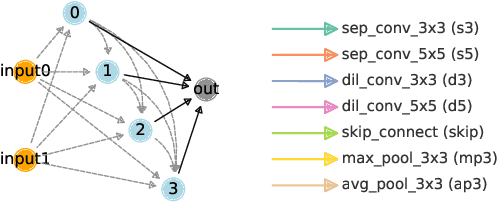

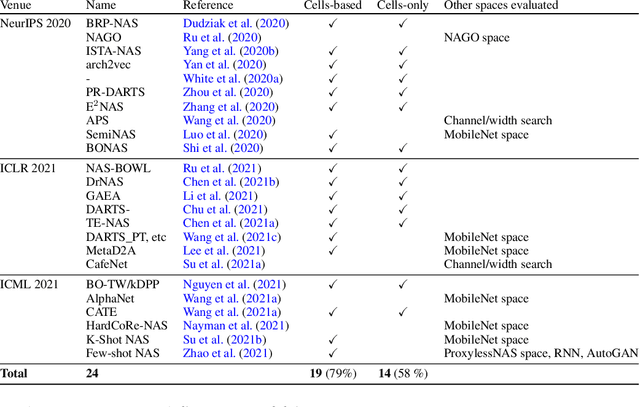

Abstract:Searching for the architecture cells is a dominant paradigm in NAS. However, little attention has been devoted to the analysis of the cell-based search spaces even though it is highly important for the continual development of NAS. In this work, we conduct an empirical post-hoc analysis of architectures from the popular cell-based search spaces and find that the existing search spaces contain a high degree of redundancy: the architecture performance is minimally sensitive to changes at large parts of the cells, and universally adopted designs, like the explicit search for a reduction cell, significantly increase the complexities but have very limited impact on the performance. Across architectures found by a diverse set of search strategies, we consistently find that the parts of the cells that do matter for architecture performance often follow similar and simple patterns. By explicitly constraining cells to include these patterns, randomly sampled architectures can match or even outperform the state of the art. These findings cast doubts into our ability to discover truly novel architectures in the existing cell-based search spaces, and inspire our suggestions for improvement to guide future NAS research. Code is available at https://github.com/xingchenwan/cell-based-NAS-analysis.
CODA: A Real-World Road Corner Case Dataset for Object Detection in Autonomous Driving
Mar 15, 2022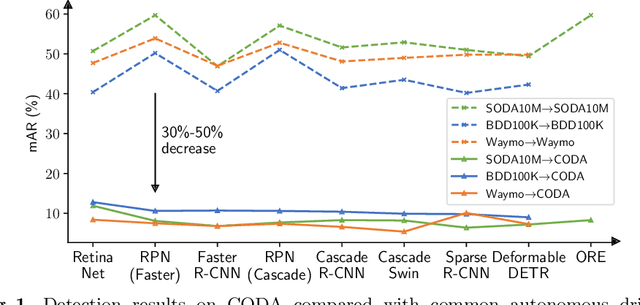
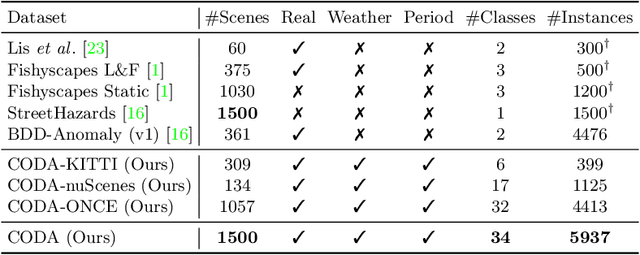
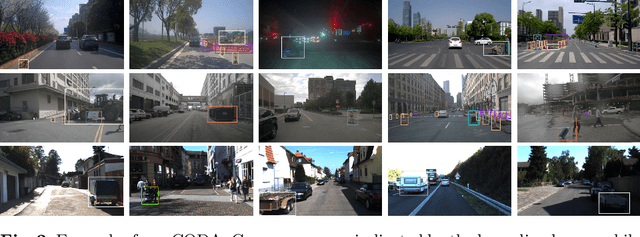
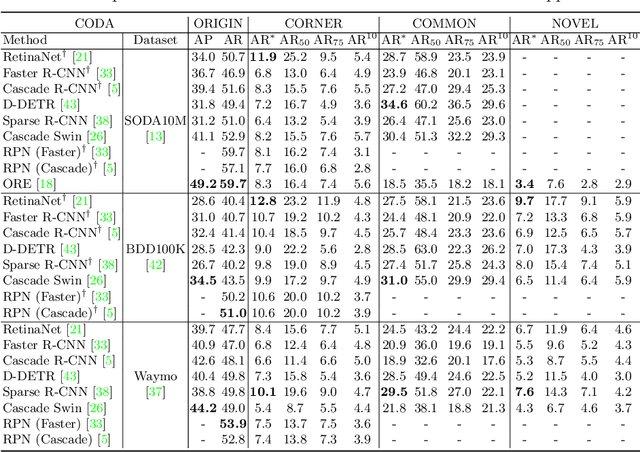
Abstract:Contemporary deep-learning object detection methods for autonomous driving usually assume prefixed categories of common traffic participants, such as pedestrians and cars. Most existing detectors are unable to detect uncommon objects and corner cases (e.g., a dog crossing a street), which may lead to severe accidents in some situations, making the timeline for the real-world application of reliable autonomous driving uncertain. One main reason that impedes the development of truly reliably self-driving systems is the lack of public datasets for evaluating the performance of object detectors on corner cases. Hence, we introduce a challenging dataset named CODA that exposes this critical problem of vision-based detectors. The dataset consists of 1500 carefully selected real-world driving scenes, each containing four object-level corner cases (on average), spanning 30+ object categories. On CODA, the performance of standard object detectors trained on large-scale autonomous driving datasets significantly drops to no more than 12.8% in mAR. Moreover, we experiment with the state-of-the-art open-world object detector and find that it also fails to reliably identify the novel objects in CODA, suggesting that a robust perception system for autonomous driving is probably still far from reach. We expect our CODA dataset to facilitate further research in reliable detection for real-world autonomous driving. Our dataset will be released at https://coda-dataset.github.io.
Memory Replay with Data Compression for Continual Learning
Mar 09, 2022
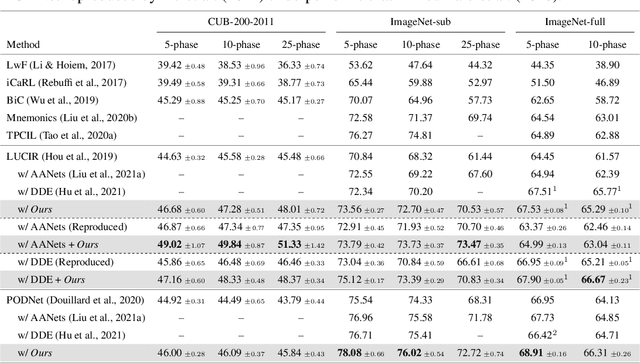

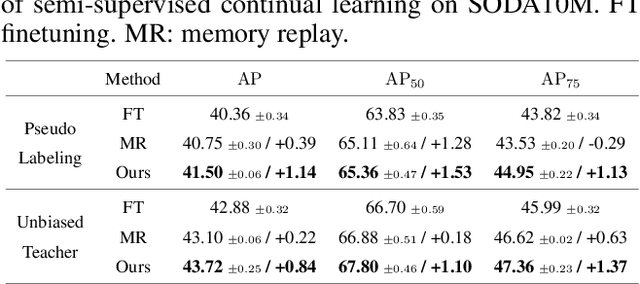
Abstract:Continual learning needs to overcome catastrophic forgetting of the past. Memory replay of representative old training samples has been shown as an effective solution, and achieves the state-of-the-art (SOTA) performance. However, existing work is mainly built on a small memory buffer containing a few original data, which cannot fully characterize the old data distribution. In this work, we propose memory replay with data compression (MRDC) to reduce the storage cost of old training samples and thus increase their amount that can be stored in the memory buffer. Observing that the trade-off between the quality and quantity of compressed data is highly nontrivial for the efficacy of memory replay, we propose a novel method based on determinantal point processes (DPPs) to efficiently determine an appropriate compression quality for currently-arrived training samples. In this way, using a naive data compression algorithm with a properly selected quality can largely boost recent strong baselines by saving more compressed data in a limited storage space. We extensively validate this across several benchmarks of class-incremental learning and in a realistic scenario of object detection for autonomous driving.
* arXiv admin note: text overlap with arXiv:1207.6083 by other authors
 Add to Chrome
Add to Chrome Add to Firefox
Add to Firefox Add to Edge
Add to Edge